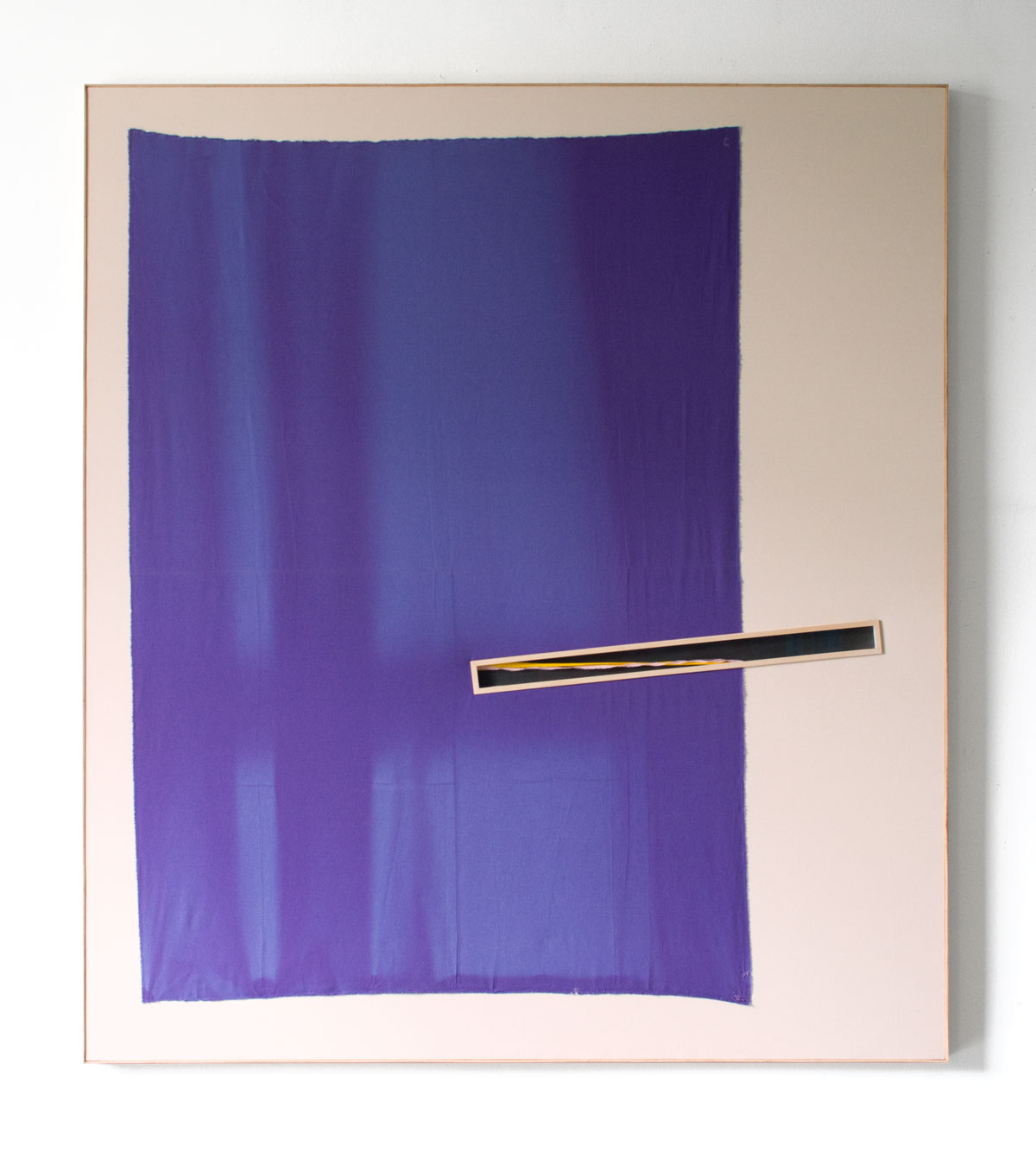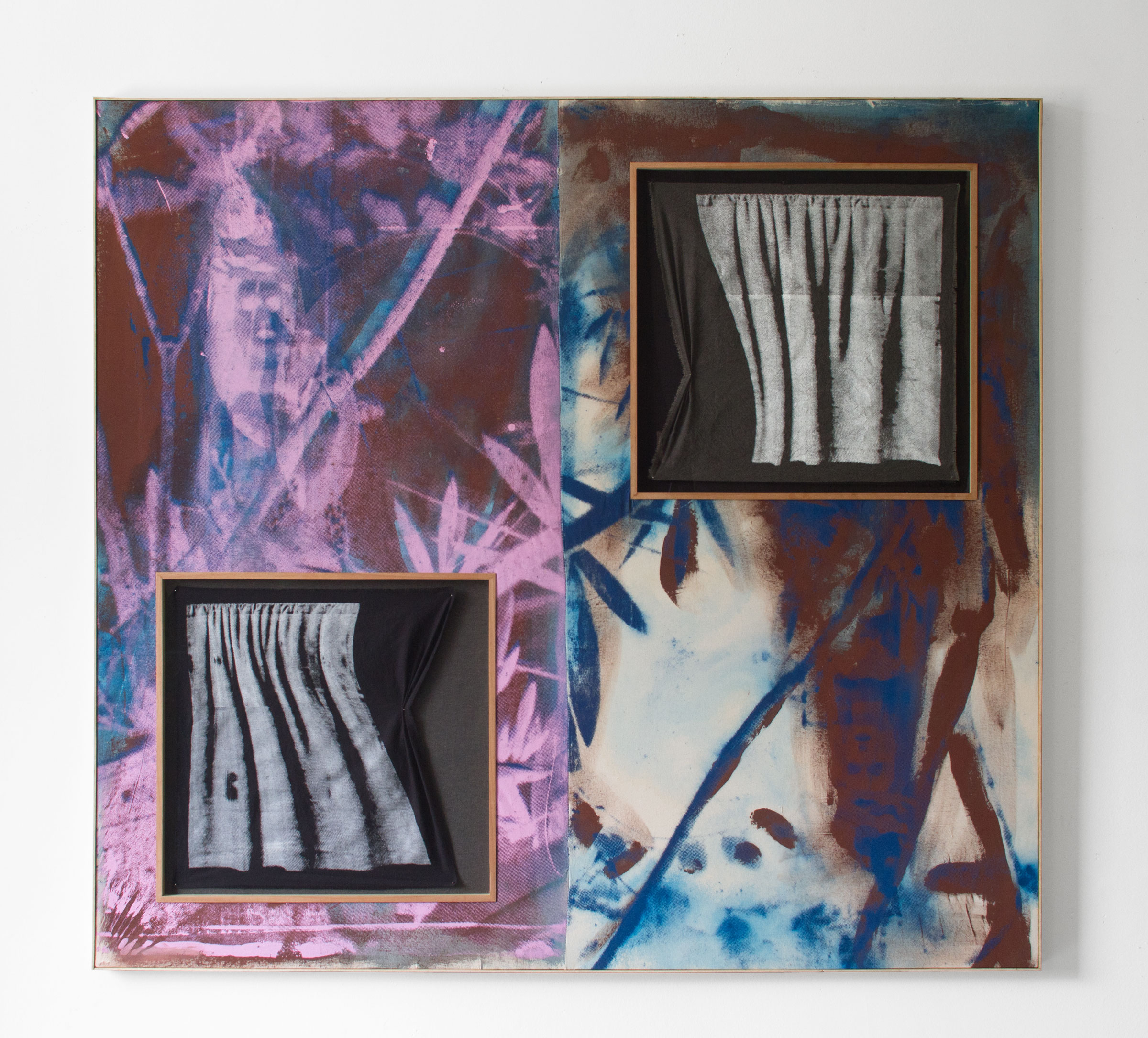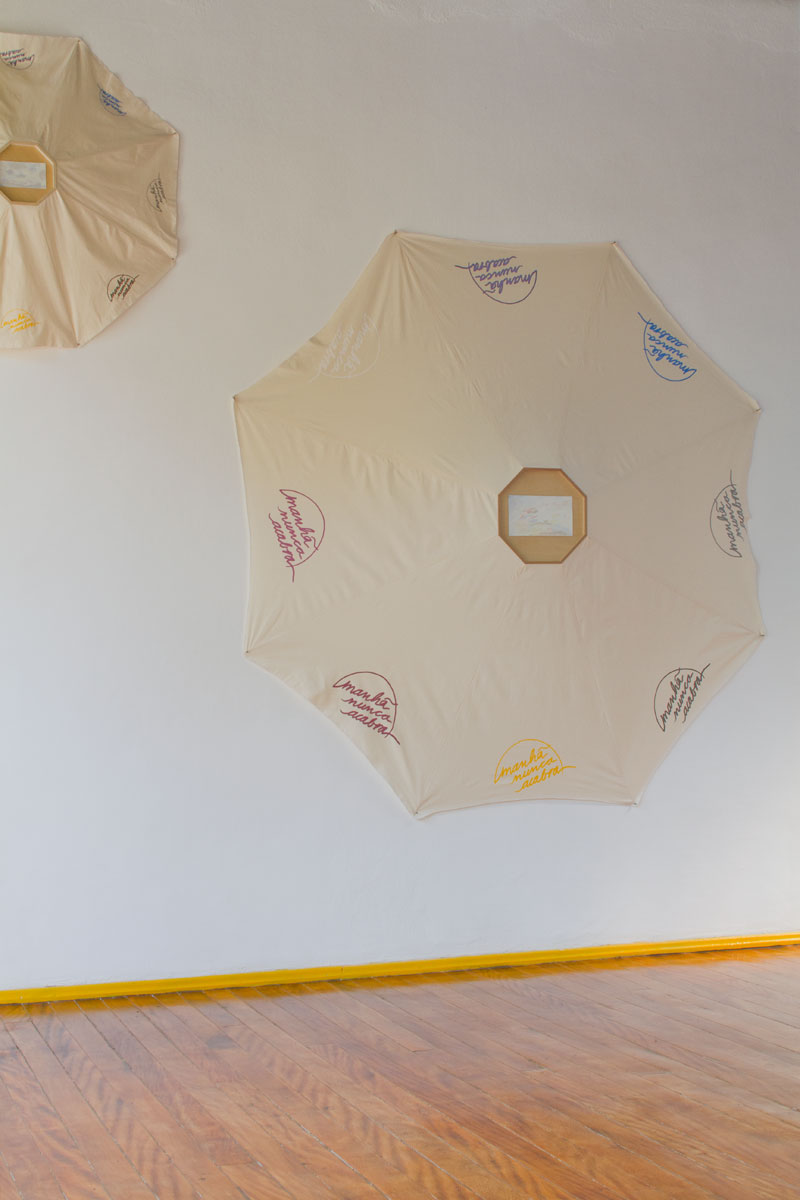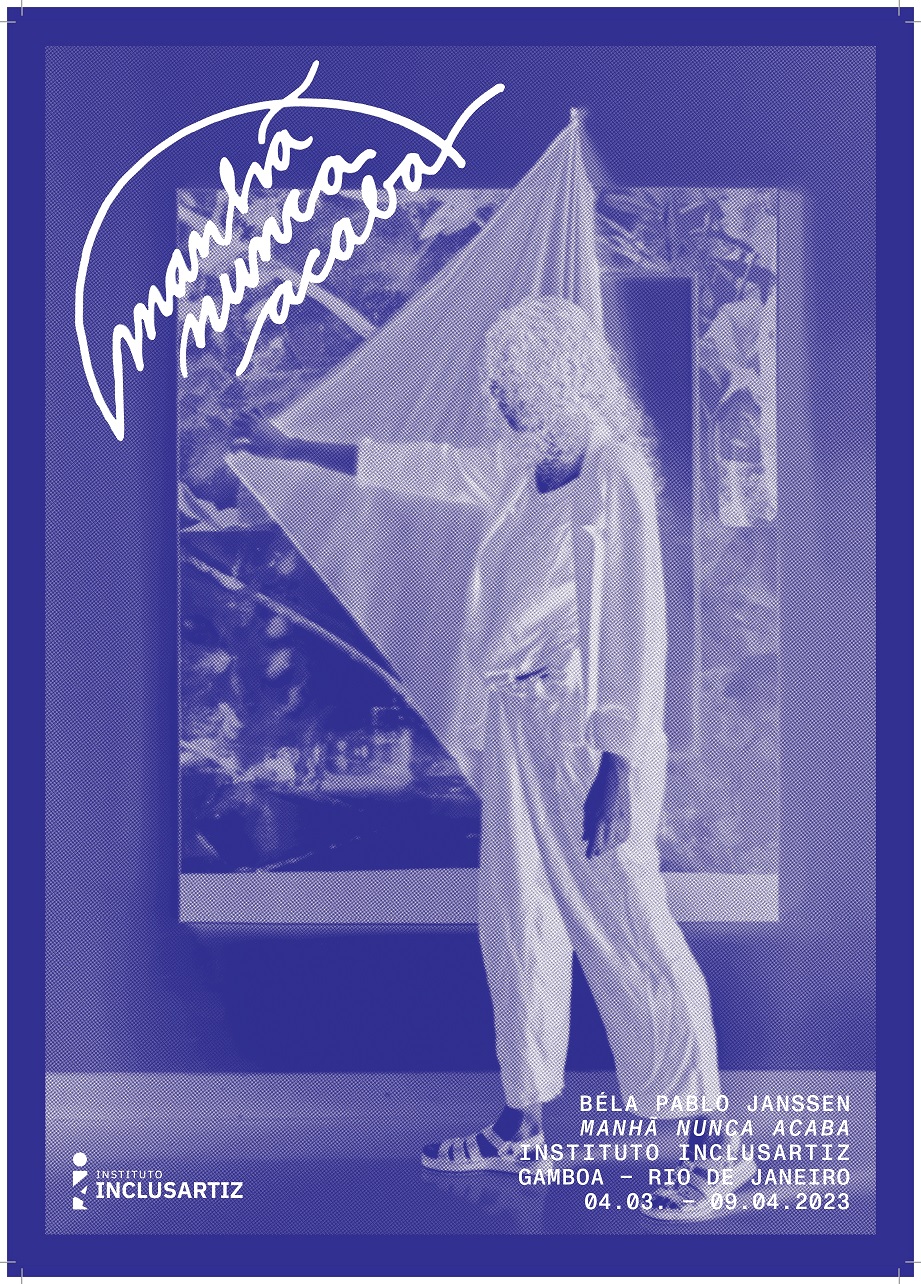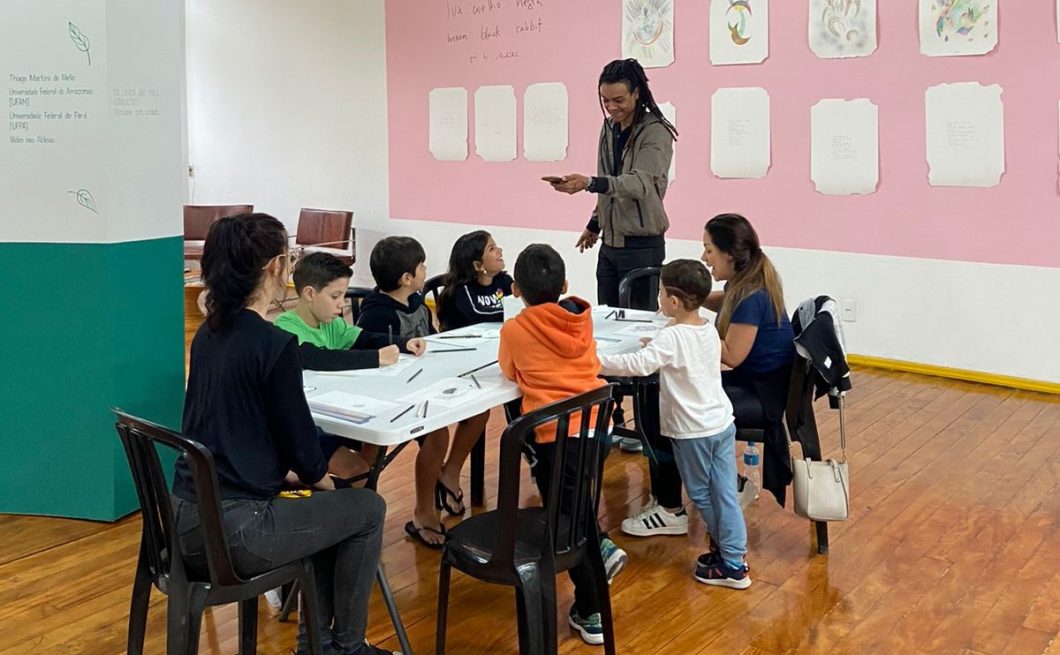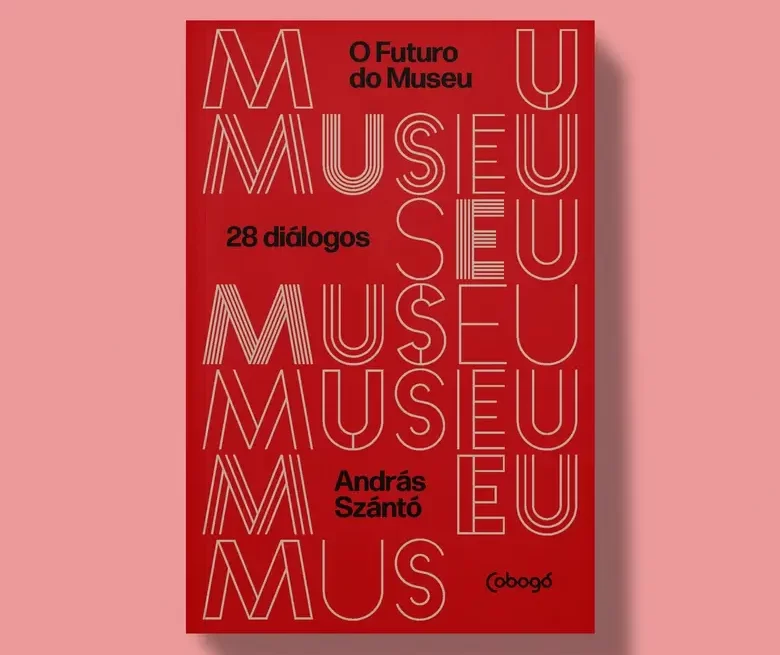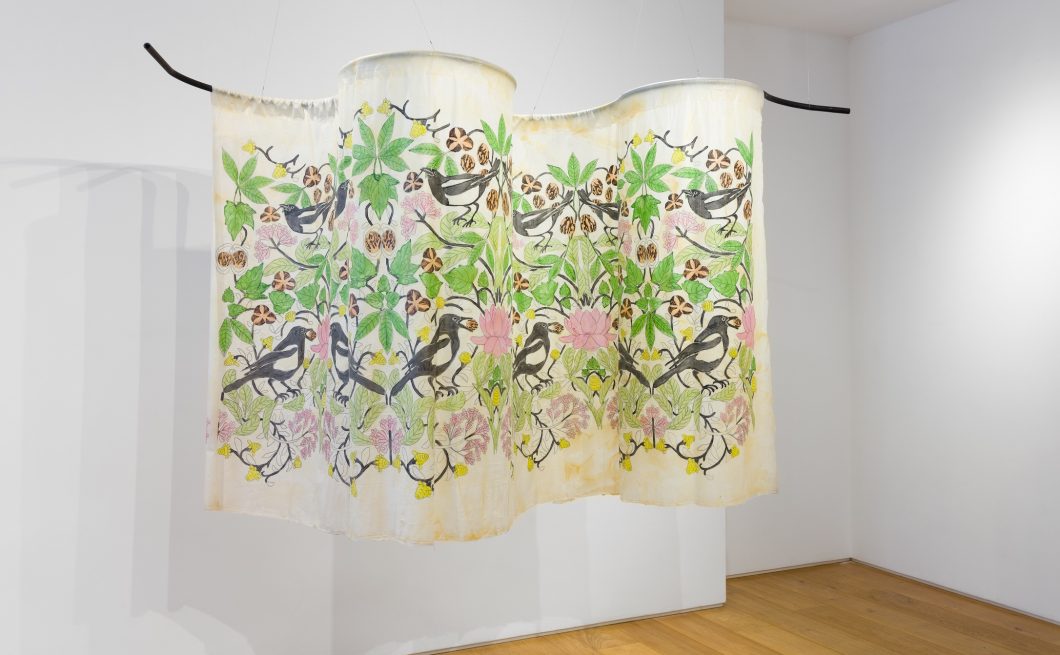Inclusartiz Cultural Center presents “Morning Nerver Ends”, Béla Pablo Janssen’s first solo show in Brazil
The German artist, who has already exhibited in Japan, Switzerland and France, opens on March 4th an exhibition with works produced during his residencies at Instituto Inclusartiz and FAAP
Next Saturday, March 4, Inclusartiz Cultural Center opens to the public the exhibition MANHÃ NUNCA ACABA (MORNING NEVER ENDS), by German artist Béla Pablo Janssen, in his first exhibition in Brazil. The solo show will occupy partially the second floor of the cultural center — designed to be a collective studio and exhibition space for resident artists — with recent works by Janssen, who, between December 2022 and February of this year, took part in the Artist Residency and Research Program at Instituto Inclusartiz, in parallel with his residency at FAAP, in São Paulo.
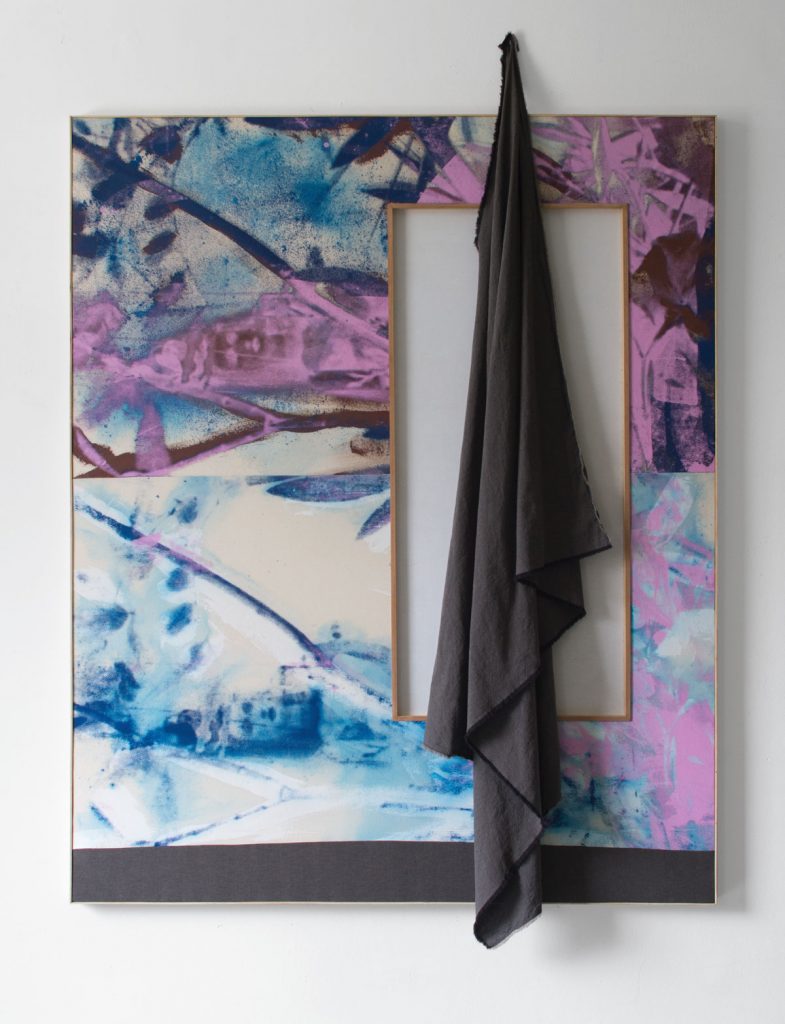
Janssen’s research and works, which have already been present at art institutions and fairs in Japan, Switzerland, France, among other countries, now gain a new development on Brazilian landscape. With a critical text and guidance from Lucas Albuquerque, curator and coordinator of the residency program at Inclusartiz, the exhibition features the series “Horizontal Now Vertical” (2022), in which the artist uses umbrellas as a support for creating installation paintings that are part of his exercises to depict the sunrise and thus materialize the phrase that guides this body of work. Another series featured in the exhibition is “Yes, Yes, Fleeting Secrets” (2022), which discusses the condition of painting, using the allegory of the curtain as a clue for creating works that deal with reflexivity and representation.
“Through the use of unorthodox materials in the pictorial tradition, but very common to us, such as TNT and mosquito nets, the artist problematizes in his works the dubious relationship of painting, which is at the same time a two-dimensional support and a possible window for the three-dimensional representation of image formation. For this, Béla makes use of the reflexivity of glass, which puts the spectator into the scene, as well as the allegory of the curtain, standing between the vision and the staging, which is beyond. Comparatively, I can say that the body of work is produced with a precise interest in this place, the threshold that separates the inside and the outside,” comments curator Lucas Albuquerque.
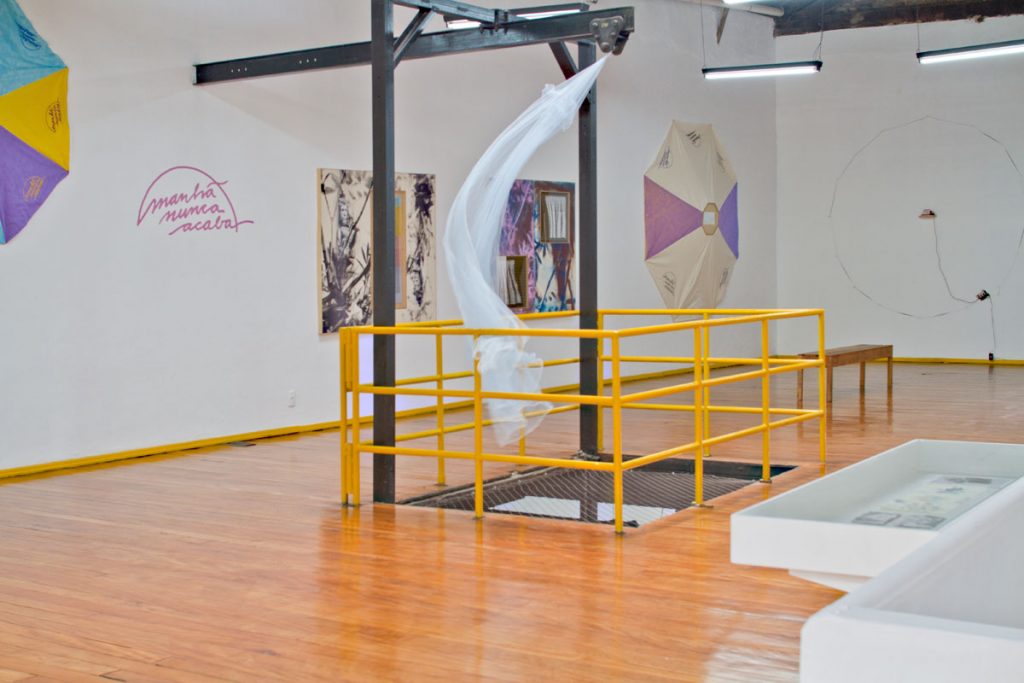
Béla Pablo Janssen’s participation in Instituto Inclusartiz’s Artist Residency and Research Program, as well as his solo show, are in line with the project to promote global contemporary art by Inclusartiz since its inception, which aims at cultural exchange and the sharing of knowledge between artists, curators and researchers at national and international levels.
YES, YES, FLEETING SECRETS
By Lucas Albuquerque
According to the myth narrated by Pliny the Elder, in Ancient Greece the painters Zeuxis and Parrhasio mastered pictorial realism with great mastery, being able to deceive the perception of anyone who came across their frescoes and panels. One day, for pure vanity, a competition was created in order to reveal which of the two was the most skilled. Zeuxis, responding to the challenge, painted fruit so juicy that even birds came to eat it, unable to distinguish between representation and reality in his images. The next day, Parrásio invites his opponent to visit his studio, leading him to a canvas covered by a cloth. Zeuxis, in readiness, orders the curtain raised to take the test. As he advances towards it, the painter realizes that he has been defeated by his opponent‘s virtuosity: the fabric was nothing more than a representation, so convincing that it had deceived not only the senses of birds, but also the gaze of an artist.
However, the embarrassment of Zeuxis caused by his defeat blinded him to the recognition of Parrhasius as one of the first painters to reflect on the condition of painting itself. Centuries later, in a pictorial tradition that permeates the religious images of Piero della Francesca, the carnality and aristocracy of Rembrandt and Vermeer, the impact of the discovery of the unconscious by Magritte and the formalist investigation of Gerhard Richter, the allegory of the curtain survives as a reminder of its doubly nebulous nature: at the same time that it is a speculation about what lies beyond its surface, it is also embodied materiality. Between the burden of representation and the planarity inherent in painting, the curtain intervenes in its mysterious condition of covering and showing, producing new framings. Invites self-reflection.
The curtains that appear in Béla Pablo Janssen‘s (BPJ) paintings establish a game of representation and material means in the very condition of visibility that is established. Here, translucent fabrics and glass play with the idea of seeing through, producing a spiraling chase of what, at some point, will appear gracefully. What is visible, however, is precisely the intrinsic condition of painting made tangible in its self-reflexive allegory par excellence, remaking itself at every moment in its metalanguage. Produced during BPJ‘s artistic residency at Instituto Inclusartiz and Fundação Armando Alvares Penteado – FAAP, the series “Sim, Sim, Segredos Fugazes“ (2022) a name that also works as a mantra – presents the other, that is, the spectator, as a constituent part of its completeness: the reflection in the glass and the movement of the fabric produced by a body in relation builds fictions about the interior and exterior. Sometimes emptied presence, sometimes potential absence.
There is, however, in the duality of relationships that are not fixed in the artist‘s production, a certain flirtation with mysticism that can be glimpsed through the gaps that escape around the glass. A scene recurs in some of the paintings: in it, branches and leaves overlap the image of a sculpture in the background. A female body? A religious object? Seeming to make sense of the edges, the mysterious figure flows in the very inviting allegory of the curtains, which brings together a good part of the history of Western painting and, still, preserves the right of doubt. Freed from the burden of answering, the image is then negated, colored, rotated and fractured, submitting itself to a series of experiments that strain its own content. Within the pictorial investigation, it acquires different readings through its application. Even if a certain banality finds her ready in this process, how can we close our eyes to the yin-yang produced in the complementary opposite relationship in the work “Sim, Sim, Segredos Fugazes (two curtains)“? Circularity itself contains the mystical – a form, par excellence, of divine cyclical time, of mandala, of ritual. Something between the haunting and the mystical.
This opens up another understanding of the interests surrounding the body of work presented. The circle is also present in the very idea of a loop that governs the poetic experimentation of a set of works – whether in the music tape circuit, in the parasols, in the mosquito net or in the phrase “morning never ends“, printed on fabrics and arranged here. While the formal reading of the curtain traces a belief in the object and in the qualities of the material medium, the circular form makes a new bet – this time, not on the magic of the image in becoming a window, but on the potential of art to conduct a re-enchantment of the world.
In their playful and fleeting aspect, the colored TNT materials, whose candor softens the gaze, dance in the company of the wind, producing a painting in which the use of color is established in relation to its surroundings. Deep in the parasols of the series “horizontal agora vertical” (2022), the octagon is accompanied by a watercolor in the center, whose motif deals with quick apprehensions of the horizon at dawn. The phrase “morning never ends” stamps the edges of the object-painting, proposing the powerful glimpse of an endless morning that, once the space-time challenge is launched, proves to be empirically possible in the change of perspective of the one who sees it, since the sunrise and sunset are expressions located at a fixed point. The light that announces the dawn never ceases to appear in some part of the globe, after all. Form and text reveal a problem of perspective, another theme dear to the pictorial tradition but which, here, indicates its discussion less in the field of representation and more in position. If the stretching of time can seem quite absurd from a physical point of view, the solution can be seen between layers of color and brushstrokes: unable to walk in the presence of the sun continuously, the artist makes his desire in watercolors perennial. Without secrets.
ABOUT THE ARTIST
Béla Pablo Janssen (1981) lives and works in Cologne, Germany. He holds a degree in Illustration, Design and Communication from the Hochschule für Angewandte Wissenschaften Hamburg (2007) and a master’s degree in Painting, with Walter Dahn, from the Hochschule für Bildende Künste Braunschweig (2012). Among the exhibitions in which he took part are BÉLA PABLO, by #NotFor$ale, Basel, Switzerland (2022); Mit Wenig nach Venedig, at artothek, Cologne, Germany (2018); Le soleil se lève derrière l’abstraction, Galerie Jeanroch Dard, Paris, France (2014).
SERVICE
MORNING NEVER ENDS, by Béla Pablo Janssen
Opening: Saturday, March 4, from 4 pm to 8 pm
Visitation: until April 9, from Tuesday to Sunday, from 11 am to 6 pm
Inclusartiz Cultural Center — Rua Sacadura Cabral, 333, Gamboa, Rio de Janeiro.
Free admission
